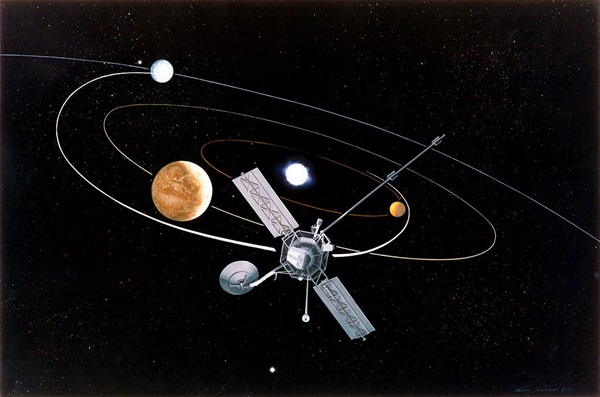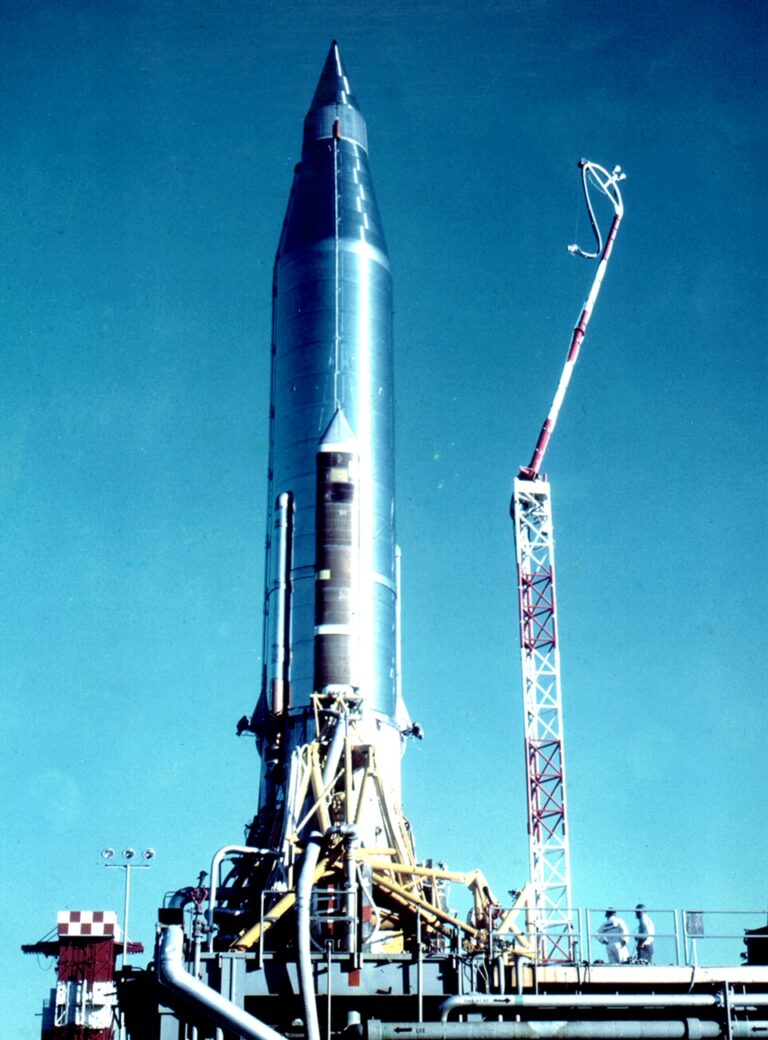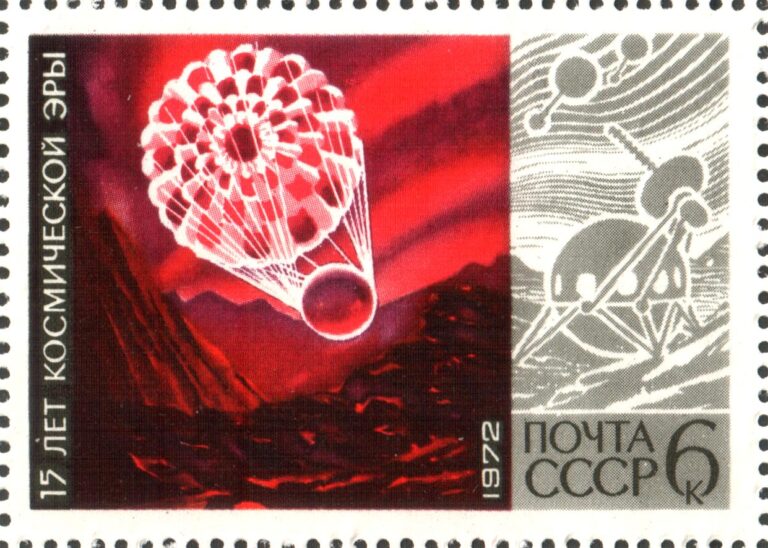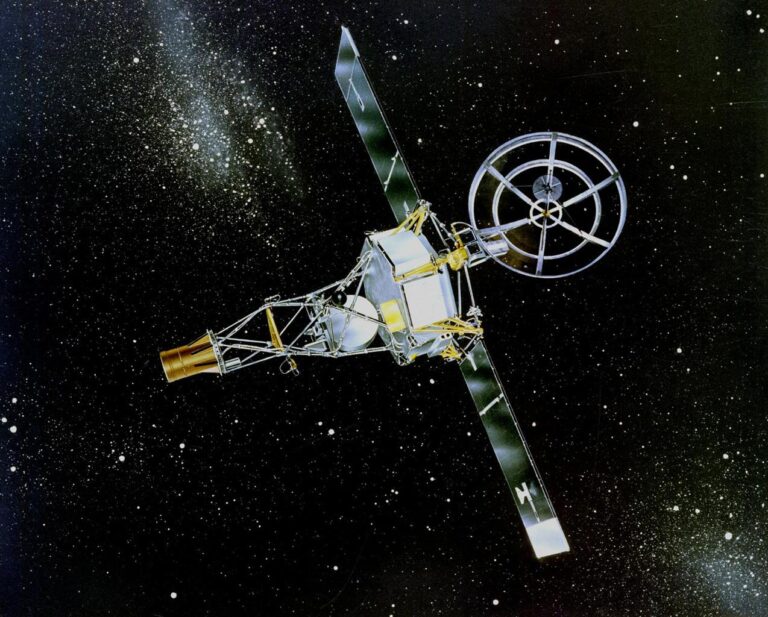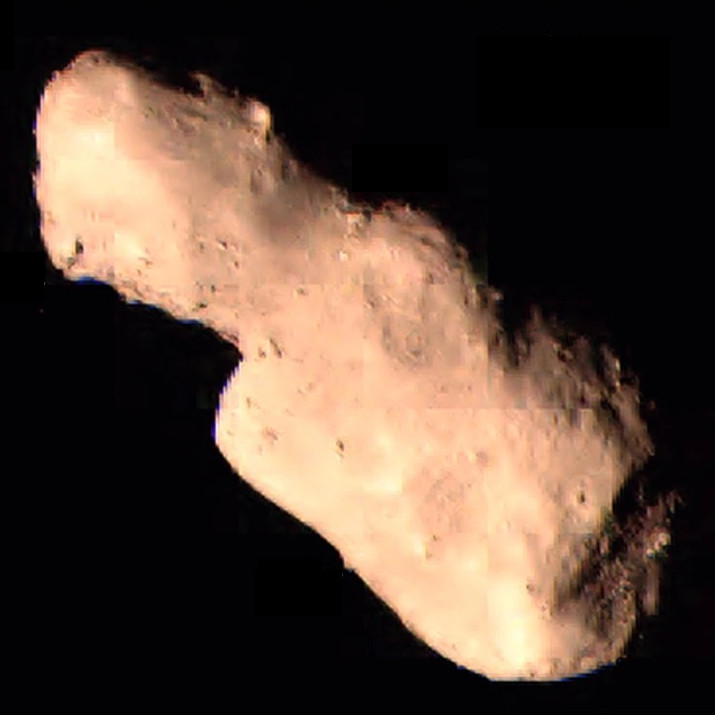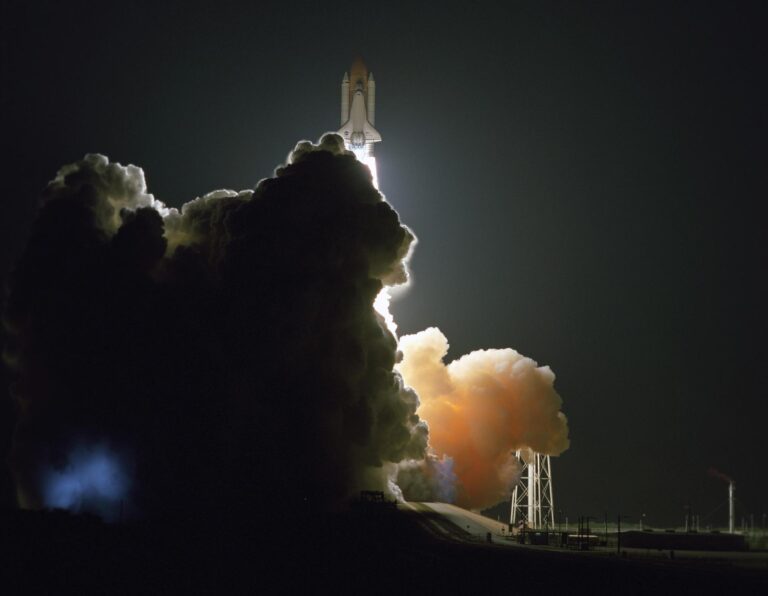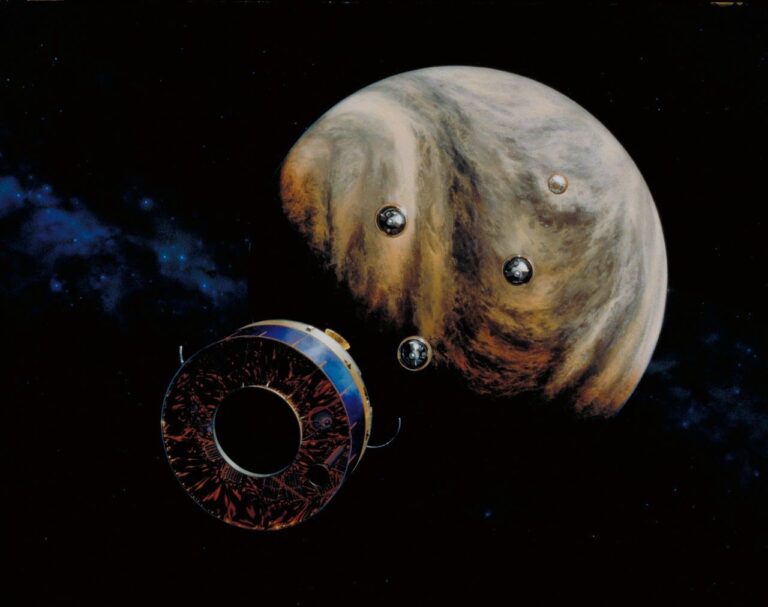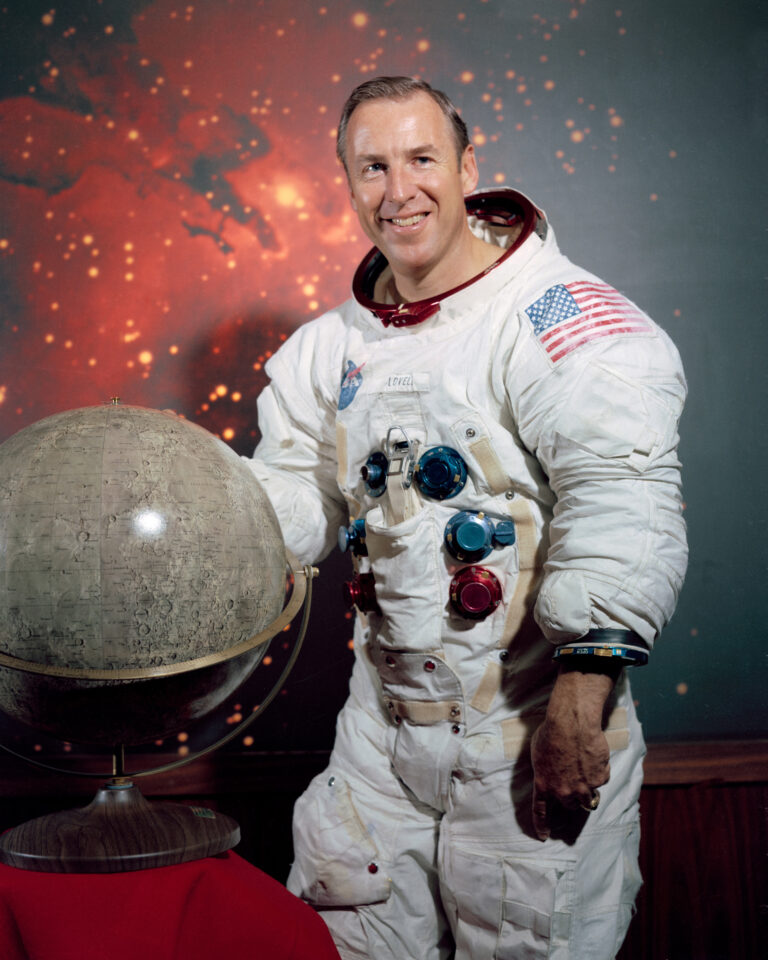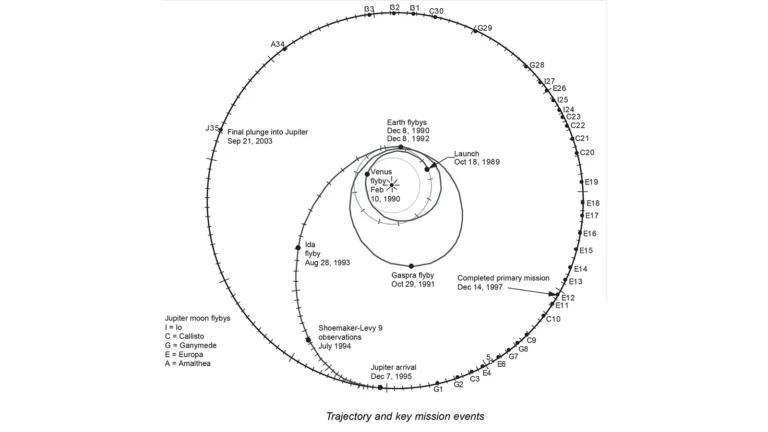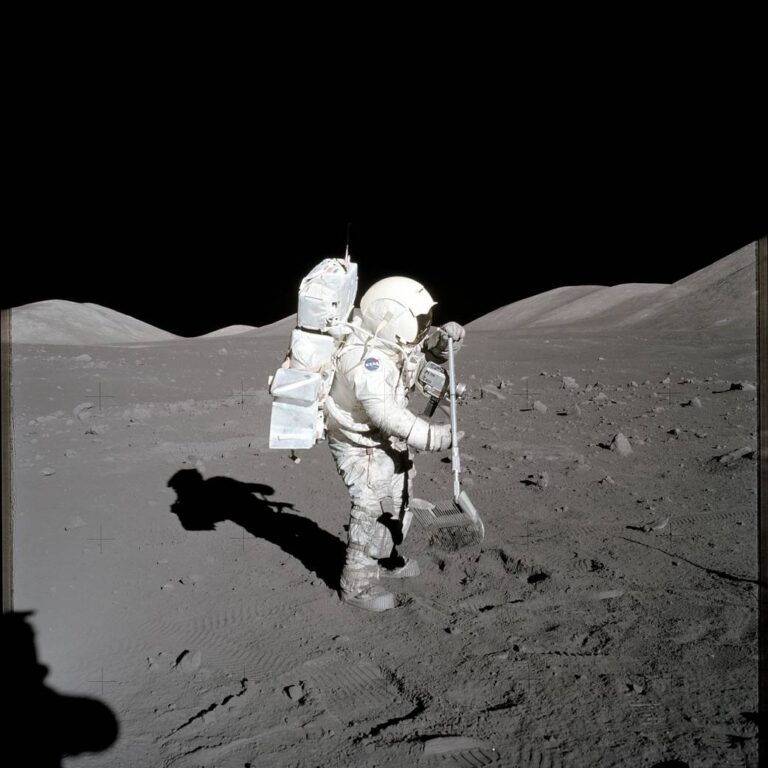Key Takeaways:
- Mariner 10 experienced numerous in-flight issues, including a power system failure, recurring computer resets, star tracker confusion caused by paint flecks, and critical depletion of attitude-control gas, necessitating innovative ground-based interventions such as solar sailing to achieve its mission objectives.
- Voyager 1 narrowly avoided mission failure during launch due to a significant propellant leak in its second stage, ultimately achieving its intended orbit with a critically small margin of three seconds of fuel remaining in its third stage.
- The Huygens lander's communication system was discovered to have a critical programming error related to the Doppler effect, which would have prevented data transmission from Titan; a subsequent mid-mission trajectory alteration was implemented to ensure successful data relay to Cassini.
- The Hubble Space Telescope was launched with a manufacturing defect in its primary mirror, causing severe optical aberration; this was subsequently corrected through a complex orbital servicing mission that installed corrective optics.
A tiny problem can have huge consequences for a space mission. Sometimes a huge endeavor hinges on the smallest detail — three seconds’ worth of fuel, an engineer’s stubbornness, a speck of paint, or a 1.3-millimeter calibration. When surprise glitches revealed themselves after launch, it took massive efforts to save the missions that gave us a closer look at Mercury, a tour of the outer solar system, our only glimpse of Titan’s surface, and an incredible view of the early universe. But even with hundreds of people putting in months of work, a few of these missions only succeeded by a razor-thin margin.
Mariner 10 Was Determined to Fail
Mariner 10 pretty much spent its whole mission trying to fail in increasingly creative ways, and its mission team back on Earth had to work constantly to keep the spacecraft on track.
About a month after launch, for no apparent reason, Mariner 10 irreversibly switched itself from main power to backup power, leaving the mission with no backup if the power system failed. Just in case that wasn’t stressful enough for the folks back home, one of the spacecraft’s computers developed a habit of resetting itself during preparations for roll maneuvers, which reset the onboard computer’s clock to zero. Mariner 10’s clock needed to be in sync with the one at Mission Control so mission planners could send the spacecraft commands from Earth; every time the clock reset, the mission team had to reset their clocks and completely re-plan the sequence of commands — which meant rewriting and checking several pages of code.
And the spacecraft’s state-of-the-art navigational system kept trying to chase stray flecks of paint. The reflective white paint that helped protect the high-gain antenna and solar panels from overheating tended to flake, sending bright white specks across the star tracker’s field of view every time the solar panels or antenna moved. During maneuvers, the tracker might get confused and follow the paint speck instead of the star Canopus, which it was supposed to use as a navigational guide. A safety program automatically rolled the spacecraft until it caught sight of the star again, but every roll cost precious attitude-control gas.
In January 1974, the team realized that attitude-control gas was going to be a serious problem. When the solar panels and the gyros moved at the same time — during any kind of trajectory correction, for instance — they set off an oscillation that caused the attitude-control system to use a lot of gas for corrections, in addition to the fuel Mariner 10 wasted every time it rolled to chase a paint fleck. As Mariner 10 left Venus behind, mission director Donna Shirley and her team realized they had to find a way to complete the upcoming trajectory correction maneuver without using the gyros.
They found a way to tilt the solar panels so that pressure from the solar wind would help keep the spacecraft properly oriented, but by its third encounter with Mercury, Mariner 10 had almost no attitude-control gas left. That almost doomed the mission at the last minute. When the team tried to orient for approach using the solar sailing method, the spacecraft ended up rolling into an awkward attitude that left its radio antenna pointed the wrong direction to send home data or receive new commands. The German Helios mission saved the day by giving up its time on the Deep Space Network (just at the peak of its most important data collection) so the Mariner 10 team could use the powerful antennas to get the spacecraft oriented properly.
And then everybody held their breath, waiting to see if, after all those months of struggling, Mariner 10 would end its mission by crashing into Mercury at the last moment. Nobody had a very accurate estimate of Mercury’s mass in 1974, so it was nearly impossible to precisely predict the gravity that would be tugging the spacecraft downward on its final close pass. As the spacecraft approached, the mission’s simulation predicted a crash — but in the end, Mariner 10 skimmed past Mercury just 190 miles above its rocky surface.
Mariner 10 finally ran out of attitude-control gas just eight days after that final flyby. The team turned off the spacecraft’s radio transmitter and left it to orbit the Sun and think about what it had done — which was quite a lot, in the end. It sent home the first close images of Mercury and Venus and pioneered the gravitational slingshot method later used by Voyager, Cassini, Galileo, and other missions.
“It was ultimately a very successful mission; the spacecraft just broke all the time,” Shirley wrote in her book Managing Martians.
Voyager 1 Almost Ran Out of Gas
Voyager 1, the mission that paved the way for Galileo and Cassini, almost didn’t make it out of Earth orbit.
As Mission Control counted down the seconds until launch, a nasty surprise waited in the Titan second stage’s fuel system: a leak, small enough to have been missed in pre-launch inspections, but big enough to potentially doom the mission. By the time the team on the ground discovered the problem, Voyager 1 was already on its way to space, with the Titan rocket’s second stage short about 1200 pounds of propellant.
That meant the spacecraft might not make it into a high enough orbit around Earth for the maneuver that would break it away from Earth’s gravity and set it on a course for Jupiter. It looked like Voyager 1, instead of exploring the outer Solar System, might never leave Earth orbit — the spacefaring equivalent of running out of gas before you’ve left the driveway.
If Voyager 1 didn’t make it, its sister ship, Voyager 2, which had launched about two weeks earlier, would have shifted its course, skipping its flyby of Uranus and Neptune in favor of getting a closer look at Saturn’s largest moon, Titan. Activating that backup plan would have cost science the only mission to ever closely observe our solar system’s ice giants.
Voyager 1’s third-stage Centaur rocket carried a little extra propellant, but as it left Earth’s atmosphere behind, no one was sure whether that would actually be enough to make up for the leak. And the stakes were pretty high; if you run a rocket’s propellant completely dry, the fuel pumps can explode, taking the rocket and its payload with them. Voyager 1 could go from getting stuck in Earth orbit to becoming a cloud of space debris for future missions to dodge.
In the end, the Centaur had just enough fuel to make it. When Voyager 1 achieved its planned orbit, it had just three seconds’ worth of fuel to spare. That’s a thin margin on which to hang a flagship mission, but it worked. A fourth rocket stage, built into the Voyager 1 spacecraft itself, fired to put Voyager 1 on course toward Jupiter. The rest is history: a mission that changed our view of the outer solar system, raised new ideas about where to look for liquid water and life, and paved the way for the Galileo and Cassini missions to Jupiter and Saturn.
Huygens Would Have Disappeared on Titan
The Huygens lander would have been a titanic failure if one engineer hadn’t insisted on doing an extra radio test at the last minute.
Cassini’s mission committee initially rejected the test as unnecessary. The ESA didn’t want to spend time and resources on any additional tests, but Smeds was determined enough to spend six months convincing his colleagues. In March 2000, when Cassini passed close enough to Earth for quick communications for the last time, the Cassini-Huygens team programmed Cassini, Huygens, and the Deep Space Network’s Goldstone Tracking Station to simulate their communications as Huygens descended through the hazy atmosphere of Titan. To everyone’s surprise, all Cassini received from Huygens were a few garbled fragments of data.
It took six months of frantic work between March and October 2000 just to identify the problem: the mission’s communications programming had failed to account for the Doppler Effect. As Huygens descended toward Titan’s frigid surface, Cassini would keep orbiting Saturn, so the two spacecraft would be travelling at very different speeds — about a 5.5 km/s difference.
When Huygens beamed its data up to Cassini, it started each section with a synchronization pulse — a special pattern of bits that helped Cassini’s computer read the data correctly. The difference in speed caused the signal to reach Cassini at a higher frequency than intended, which put those pulses in unexpected spots. For Cassini, it was like trying to read a sentence with all the spaces between words in the wrong places.
And that problem had been encoded into Cassini’s radio receiver firmware, which couldn’t be changed after launch. It took a team of over a hundred people another nine months to put together a solution. They tried a few programming fixes like inserting some extra blank spaces in the data stream to slow things down, as well as simply reducing the rate of transmission, but those didn’t make a big enough difference to save the mission.
Instead, the Cassini team had to rework the mission’s whole trajectory. Cassini was originally supposed to make a very low pass over Titan during the landing, at about 1,200 km. The new mission plan put Cassini’s closest approach to Titan at about 60,000 km. The fix delayed the Huygens landing by two months, and Cassini’s more distant course meant it would fly out of range of Huygens’ signal sooner then originally planned. But Cassini got everything Huygens managed to send, which was a wealth of data about an alien world, eerily like our own but fundamentally different.
If Smeds had given in, the first — and last — sign of a problem would have been complete silence from Titan, broken only a by a few garbled bits of data.
Hubble was a Nearsighted Telescope
What do you do when the $1.5 billion space telescope you just installed in orbit turns out to be hopelessly nearsighted? You build it a set of space spectacles.
NASA initially invested $1.5 billion in the Hubble Space Telescope. Several astronomers invested most of their careers in it, and others bet their professional futures on the data it promised to send home; Jim Gunn, for instance, spent 15 years designing the Wide Field and Planetary Camera, or WFPC 1. And then, shortly after its deployment in 1990, the first images came back blurry and totally unusable. The telescope was already in orbit 350 miles above Earth, so bringing it down to diagnose and repair the issue wasn’t an option, and the situation looked bleak (and fuzzy).
It took NASA a month of investigation to find the tiny problem that nearly doomed the enormous telescope. It turned out to have been lying in wait for nine years, since 1981: a miniscule 1.3-millimeter spacing error in an instrument used to guide the final grinding of Hubble’s 94.5-inch-wide primary mirror. The result was that the edges of the mirror ended up ground very slightly too flat — a difference of a fraction the thickness of a human hair. But it was enough to cause the mirror to scatter the light from distant objects, which produced fuzzy images surrounded by a halo-like blur. The telescope humanity had built to look farther out into the universe than ever before was nearsighted.
NASA engineers spent the next three years building a set of spectacles for the nearsighted telescope: five pairs of moveable, curved mirrors that would help correctly focus the light from Hubble’s main mirror as it passed into the telescope’s three science instruments. They called it the Corrective Optics Space Telescope Axial Replacement, or COSTAR. In December 1993, the crew of STS-61 spent 35 hours on five back-to-back spacewalks installing COSTAR and a new version of WFPC, which also helped counteract Hubble’s blurry vision.
The fix worked, and Hubble spent the next 16 years sending home crisp, clear images of the far reaches of space, studying exoplanets, discovering new moons of Pluto, and revealing the earliest galaxies in the universe. In 2009, the final shuttle mission to service Hubble replaced its science instruments with newer versions, with their own built-in corrective optics. Hubble didn’t need its spectacles anymore, so the astronauts removed COSTAR, making room for a new Cosmic Origins Spectrograph instrument.
Luck and Hard Work
“Almost every mission has some design problem,” Smeds said in a 2005 ESA interview. When engineers and scientists are lucky, that design problem shows up before launch, where it can be diagnosed and fixed on the ground. But luck isn’t always on the side of science; then it takes hard work, quick thinking, and a lot of good luck to save a mission from disaster.

